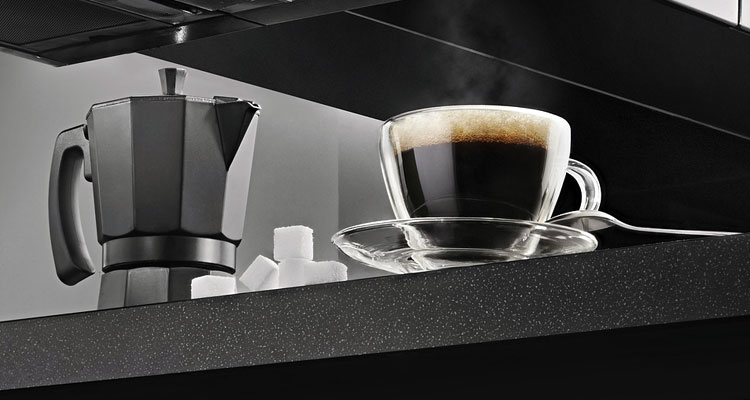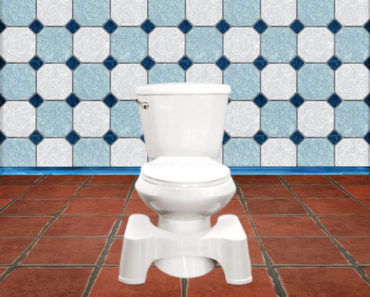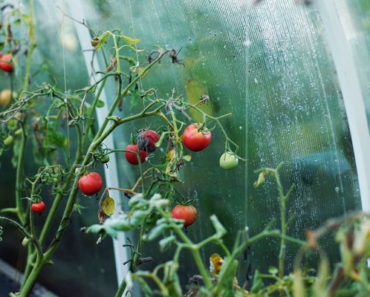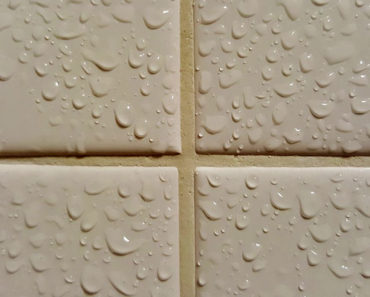Millions of people around the world drink coffee to wake themselves up in the morning and refresh themselves during the day. According to the World Coffee Organization, over 150 million bags (60 kilograms each) of coffee were sold to consumers in 2015 to 2016. The popularity of coffee shops has been increasing, but many people find this impacts their wallet, so they buy a good coffee maker for home. Many workers don’t like the quality of their office coffee, so they’ll fill up a big thermos before heading to the office. The average coffee drinker consumes over three cups a day.
This can lead to your coffee maker producing a lot of coffee each day. Over time, you may notice your coffee slightly differs in taste. This is due to your coffee maker’s reservoir building up mineral deposits that can actually affect the taste. This can also happen with the basket, carafe, thermos, and even coffee cups you use. Some people choose to buy a new coffee maker if theirs is no longer working properly, but that needlessly contributes to landfill waste when a coffee maker can easily be cleaned.
Vinegar is one of the safest and easiest methods of cleaning a coffee maker. It’s never recommended to use bleach, as it can be too harsh and wear out the interior of your coffee maker too quickly. Even baking soda is not a good idea, as it can dry out and block the spout of your coffee maker.
Why You Need to Clean a Coffee Maker
It’s important to clean both your glass or steel coffee carafes and thermoses, as well as the interior of your coffee maker. First of all, you don’t want any bacteria or mold to build up in your coffee maker, as this could be transferred to your coffee. Bacteria and mold love to live in moisture, and if the interior of your coffee maker is always damp, they’re going to breed in this moist environment.
Most of this bacteria and mold is relatively harmless to the average human, as they’re developed good immunity to common household bacteria and spores, but you should still make an effort to keep your kitchen appliances clean. Heat, such as what happens when your coffee maker brews the coffee, can often eradicate most types of bacteria or mold, but to be certain, you want to thoroughly clean your coffee maker and accessories.
You should also clean your coffee maker on a regular basis, as mineral deposits from the water can build up over time. Some homes may have elaborate water filtration systems that remove most of these minerals from the drinking water, but most homeowners can’t afford these systems.
It’s also a lot easier to clean your coffee maker once every three months, than it is to clean it only once a year. The thicker the buildup, the harder it’s going to be to clean it the first time.
A coffee maker can also have a build up of coffee from the coffee basket or funnel to the spout that sprays into the carafe or thermos. Over time, this can also affect the ability of the coffee to flow smoothly into the carafe, adding to a sluggish brew cycle. Eventually, the spray nozzle could completely plug up, and then it will be too late to clean.
It’s beneficial to clean your coffee maker at home, and your coffee maker at work. Often no one at work will think to clean the coffee maker, beyond giving it a cursory wipe. Your colleagues will thank you when they taste the great coffee that comes out of a clean coffee maker.
Why is Vinegar an Effective Coffee Maker Cleanser?
Vinegar and water is the best method for cleaning a coffee maker. Vinegar is a liquid that is made from about 5% to 20% ascetic acid and water. It’s made by fermenting ethanol with ascetic acid bacteria. There are many fancy vinegars to be found at the grocery store, but the best type to use is regular white vinegar for cleaning your coffee maker and home.
Vinegar is one of the best solutions for cleaning everything in your home. Vinegar kills most bacteria, molds, and other harmful organisms on the spot, without using toxic household cleansers that can wreck havoc with the allergic or asthmatic person.
While many people don’t like the smell of vinegar, it does dissipate after about twenty minutes, so there are no worries it will linger. You can also mix it with other additives to make it smell better.
Vinegar is also considered a safer way to clean, as there is bacteria that is becoming resistant to the strong Lysol and other store-bought household cleansers. Apparently vinegar can more thoroughly eradicate harmful bacteria in the home, keeping your family safe.
You can safely use vinegar in your coffee maker and to clean the carafe, thermos, and coffee basket.
Top 3 Methods for Cleaning a Coffee Maker
Here are three different methods of using vinegar to get your coffee maker clean and fresh. Each of the methods utilizes water, vinegar, lemon, or a combination of two or more liquids. You may wish to add lemon to counteract the vinegar smell if it really bothers you.
Follow your coffee maker’s manual on how much liquid to pour into the reservoir. For example, two, four, six, eight cups, etc.
Method 1 : Basic White Vinegar and Water
Follow these steps to quickly clean your coffee maker and get it ready for a great Monday morning delicious cup of coffee. Follow the steps thoroughly, as you want to ensure that you get your coffee maker clean, but you don’t want any lingering vinegar taste in the next cup of coffee that you brew.
- Measure out equal parts of vinegar and water. Example: one cup vinegar to 1 cup of water.
- Place a fresh paper filter in the brew basket.
- Pour both vinegar and water into the water reservoir.
- Press the button to start the brewing process.
- Pay attention during the process.
- About halfway through the brew process, turn the button off.
- Let your coffee maker sit for 30 minutes.
- Then press the button to on to continue the brewing process.
- Let the machine finish brewing.
- Empty the carafe into the sink. This also serves a dual purpose in cleaning your sink’s drain.
- Now pour in two cups of plain water (or the recommended number of cups for your coffee maker) into the reservoir.
- Add a new paper filter.
- Press the on button.
- Let your coffee maker fully complete the brew process this time round.
- Pour out the water and now you’re ready to make a good pot of coffee!
Method 2 : Vinegar and Lemon with Water
Adding lemon to the vinegar and water will counteract any moldy smells coming from your coffee maker. The lemon and vinegar work together as disinfectants. Once this method is done, you won’t smell any unpleasant smells.
- Do not use lemonade! This contains sugar, which is bad for the interior of your coffee maker. Buy one real lemon and use a juicer to squeeze out the lemon juice. Since the squeezed lemon juice may still contain some pulp and seeds, pour it through a fine metal sieve to remove these impurities. You want to be left with lemon juice. You may need to run it through the sieve a second time.
- Add the lemon juice to your 50 to 50 percent solution of vinegar and water.
- Pour this solution into the reservoir of your coffee maker.
- Place your basket into place, but don’t use a paper filter. This has the additional purpose of getting the basket clean too.
- Press the button to start the brew cycle.
- Let the solution pour through the filter into the carafe.
- When the cycle is done, discard the water.
- Repeat the process with plain water to ensure that you get all the vinegar out of the interior of the coffee maker.
Method 3 : Vinegar Only
This is a heavy-duty approach to coffee makers that are running sluggish, or when you smell something odd emanating from your coffee maker. It will be your one last attempt to save your coffee maker, otherwise it will be time to purchase a new one.
- Pour two cups of vinegar right into the water reservoir.
- Let the vinegar sit in the reservoir overnight, to melt any impurities.
- The next day, ensure the brew basket is in place, and press the button to start the brew cycle.
- Wait for the brew cycle to complete, then pour the vinegar down the drain.
- If the vinegar was significantly dark after the cleaning process, pour two more cups of vinegar into the water reservoir to repeat the process.
- Discard the vinegar in the carafe and fill with water.
- Pour fresh water only into the water reservoir.
- Let the brew cycle complete.
- Once the brew cycle is done, give the coffee maker a good sniff. It may still have vinegar inside.
- Pour more fresh water into the coffee maker and run the brew cycle again. This should be enough to have a fresh smelling coffee maker that brews normally again.
Other Cleaning Tips for a Coffee Maker
Follow these cleaning tips for a well-running coffee maker.
- Don’t forget to give the exterior of the coffee maker a good wipe down too.
- Always use a paper filter when brewing coffee, otherwise, the coffee grounds can clog up the basket’s spout.
- Ensure the coffee maker is unplugged from the outlet before you begin cleaning.
- You can use baking soda to clean the stains and buildup off the heating plate. Be careful not to get any inside the coffee maker.
- Scrub the inside and outside of the carafe or coffee thermos you use. You can also use baking soda to scrub off any residue.
- Do a final wipe down with a damp cloth.
- Give the coffee maker a few hours to dry before plugging back in again.
Warnings for Cleaning with Vinegar
Follow these warnings when you’re cleaning your coffee maker.
- Small amounts of vinegar are harmless to humans, but can harm small pets. Ensure you store vinegar on a top shelf.
- Do not use bleach to clean the inside of your coffee maker. Bleach is not meant for internal consumption, it’s meant for your washing machine.
- Do not use Drano or other plumbing products in your coffee maker. Use only food-safe liquids, such as vinegar, lemon juice, or water.
- Ensure you get all the vinegar out of the inside of your coffee maker as it won’t make your cup of coffee taste every good. Do another brew cycle with just water if you aren’t certain.
- Remember the maximum amount of fluids that your coffee maker can hold. Don’t make the mistake of pouring too much liquid into the water reservoir as it could spill over.
- When you’re doing your coffee maker maintenance it’s also a good idea to check for chips, cracks, and frayed cords. Discard the coffee maker if the cord is frayed, as that can be an electrical hazard.
- Even if you don’t use a paper coffee filter during the cleaning process, ensure the plastic basket is in place, otherwise the water could spray all over your counter.
Summary
Has your coffee maker not been brewing as good a cup of coffee as the first day you took it out of the box? Take a look at it, as it may be time to do some maintenance. Cleaning with vinegar is both simple and inexpensive.
Ensure you clean the coffee maker inside and out, and don’t forget to give the brew basket, carafe, and thermoses a good scrubbing too.
A small effort once a month will keep your coffee maker working as good as new, so that you get that perfect cup of coffee every single time.








